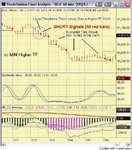Grey1
Senior member
- Messages
- 2,190
- Likes
- 204
How can you let your winners run ?
Every one tells you exit is the most important part of trading .. let your profit run ..
I tell to this people you are spot on I agree but gimme that crystal ball then i will let it run ..
SO what is the crystal ball of trading ?
What are the techniques ?
I invite traders to contribute
grey1
Every one tells you exit is the most important part of trading .. let your profit run ..
I tell to this people you are spot on I agree but gimme that crystal ball then i will let it run ..
SO what is the crystal ball of trading ?
What are the techniques ?
I invite traders to contribute
grey1


